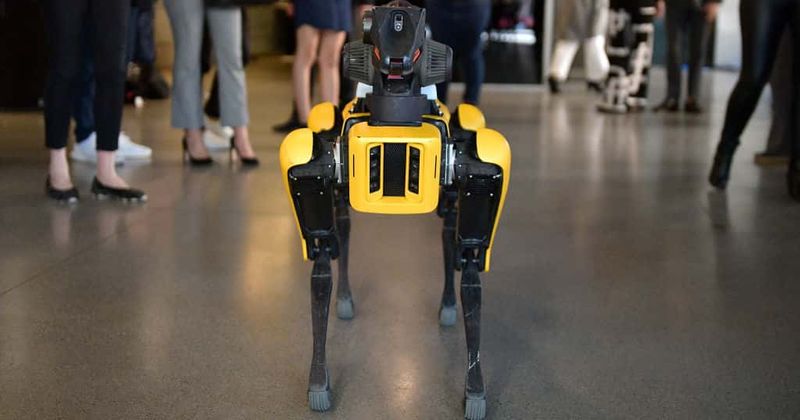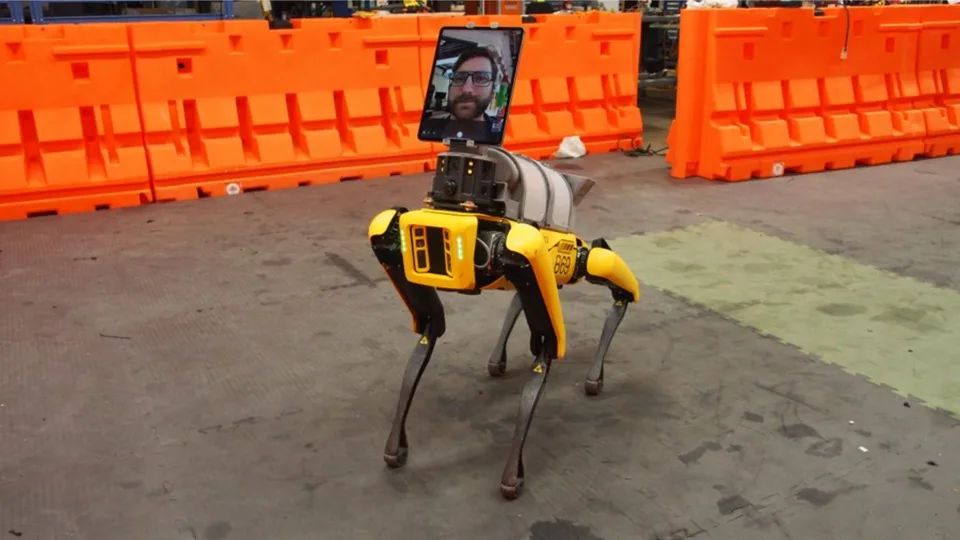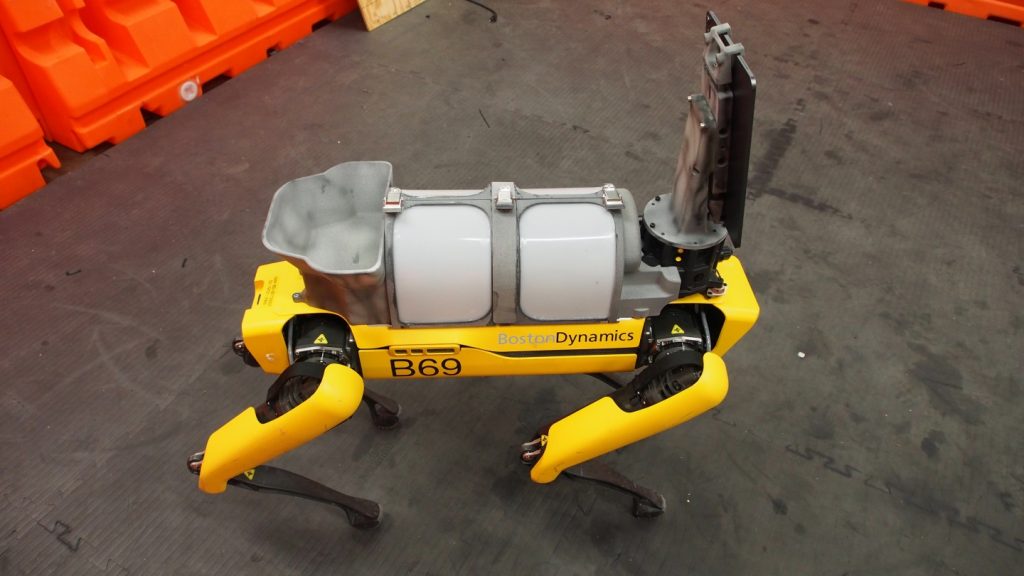Boston Dynamics’ Spot – the robot dog – is assisting doctors at Brigham and Women’s Hospital in Boston to tackle coronavirus. It has been equipped with an iPad and a two-way radio that allows healthcare professionals to conduct video conferences with patients while being at a remote place. This helps them to assess the patients that are in lockdown without exposing themselves to the virus.

This is crucial because in the US, at the very least, 5,400 nurses, doctors, and other healthcare workers have already contracted the disease themselves and have ended up losing their lives. That is the reason why Spot’s arrival has been met with a warm welcome.
Boston Dynamics said in a blog post, ‘Starting in early March, [we] started receiving inquiries from hospitals asking if our robots could help minimize their staff’s exposure to COVID-19. One of the hospitals that we spoke to shared that, within a week, a sixth of their staff had contracted COVID-19 and that they were looking into using robots to take more of their staff out of range of the novel virus.’

Spot is providing telemedicine support to the frontline staff and keeping them away from high-risk environments. The Brigham Hospital has already started real-world trials last week after gaining the consent of the patients. The current version of Spot is only capable of conducting interviews. However, an upgraded model is on its way that will come equipped with cameras. These cameras could be used to ascertain the patient’s respiration rate and body temperature.

Boston Dynamics is open-sourcing the hardware and software stack and they are available on the company’s page on GitHub. You will be able to transform other robots into workers using open-sourced software as well. The company is also working on advancing the robot so that it becomes more aligned with the hospital settings. Expected features include being able to measure body temperature, respiratory rate, oxygen saturation levels, and pulse rate. Once that is achieved, Boston Dynamics wants to rely on UV-C light for getting rid of the virus particles and to sanitize the surfaces thus making them safe for other people.


